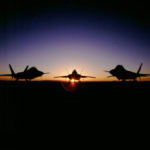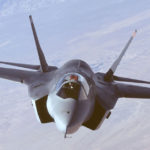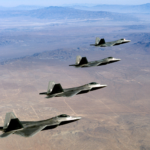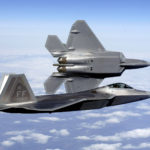Many of this type of craft have been Space-capable for generations.
–
Table of Contents:
- Introduction
- History
- Tech’ Generations
- Special Features
–
Introduction:
A fighter aircraft is a military aircraft designed primarily for air-to-air combat against other aircraft, as opposed to bombers (such as the B-2) and attack aircraft (such as the A-10), whose main mission is to attack ground targets. The hallmarks of a fighter are its speed, maneuverability, and small size relative to other combat aircraft.
Many fighters have secondary ground-attack capabilities, and some are designed as dual-purpose fighter-bombers; often aircraft that do not fulfill the standard definition are called fighters. This may be for political or national security reasons, for advertising purposes, or other reasons.
A fighter’s main purpose is to establish air superiority over a battlefield. Since World War I, achieving and maintaining air superiority has been considered essential for victory in conventional warfare. The success or failure of a belligerent’s efforts to gain air supremacy hinges on several factors including the skill of its pilots, the tactical soundness of its doctrine for deploying its fighters, and the numbers and performance of those fighters. Because of the importance of air superiority, since the dawn of aerial combat armed forces have constantly competed to develop technologically superior fighters and to deploy these fighters in greater numbers, and fielding a viable fighter fleet consumes a substantial proportion of the defense budgets of modern armed forces.
–
History:
This is actual the progression of humanity’s loss of the ability to fly/levitate, but it’s still kinda cool.
- 1914: The first shooting between aircraft of modern Earth was recorded, and within weeks most aircraft in service were armed with machine-guns and bombs.
- Piston-engine Fighters came next
- 1928: Rocket-powered Fighters
- Mid 1930s: Germany develops wooden stealth fighters that outperform most metal ones of the time
- Mid 1940s: First-generation sub-sonic jet-powered fighters
- Mid 1950s: Second-generation jet fighters
- Early 1960s: Third-generation jet fighters
- 1970s: Fourth-generation jet fighters
- 1990s: 4.5th-generation jet fighters
- 2005: Fifth-generation jet fighters
- 2025: Sixth-generation jet fighters
Further details here.
–
Tech’ Generations:
There are several distinct levels of the progression of fighter-jet technology now;
- high subsonic, conventional armament, then transonic air-to-air missiles, RADAR
- early supersonic radar, air-to-air missiles, then supersonic (limited purpose), Mach 2 air-to-air missiles only
- multi-purpose fighter-bombers, then supersonic (multirole)
- supersonic multirole, high efficiency, high maneuverability
(and 4.5 is: enhanced capabilities, advanced avionics, limited stealth) - advanced integrated avionics, low observable stealth
- Space-worthy
–
Special Features:
Newer models can be flown remotely, and by autopilot, so if a pilot ejects then the fighter-jet can continue operating, even performing much more strenuous and dangerous maneuvers, no longer being limited by how many G-forces its previous passengers could live through. The best models have Repulsine-grade devices built-in to assist with the cancelling of gravity/weight, air friction, and inertia, thus allowing them, even when piloted, to execute maneuvers comparable to the extreme ones only the unmanned vehicles used to be capable of.
–
–
Also see:
–












